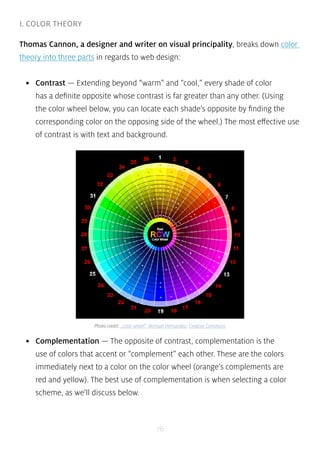What Best Describes the Difference Between Plagiarism and Fair Use
It can be used for educational purposes as well as for analysis and reviews. The key difference between plagiarism and copyright infringement is that not all plagiarisms are infringements and not all infringements are plagiarisms.

Uxpin Web Ui Design Best Practices
Which two factors most influenced the growth of the Internet during the 1970s.

. What best describes the difference between plagiarism and fair use. See for example the Code of Best Practices in Fair Use for the Visual Arts and the Code of Best Practices in Fair Use for Academic and Research Libraries. However fair use is regarded as a legal gray area since there is limited.
In part fair. She has a book. 1 commentary and criticism or 2 parody.
What is Fair Use. The shorter the amount copied and the more it is for the purpose of commentary or education the more likely it is to be deemed fair use. Plagiarism is copying material without crediting the source while fair use is a limited nonprofit use.
Plagiarism is a complex and emotive issue as previous Techdirt posts on the subject have shown. Fair use. Plagiarism is not a crime per se but in academia and industry it is a serious ethical offense and cases of plagiarism can constitute copyright infringement.
What best describes the difference between plagiarism and fair use. Increase in the power of computer hardware and increased funding from the National Science Foundation. The term fair use refers to the legal ethical and limited use of copyrighted material with no requirement for the permission of the copyright holder.
The difference between has and have is that you use has in sentences with. Plagiarism is copying material without crediting the source while fair use is a limited nonprofit use. Fair Use - a limitation and exception to the exclusive right granted by copyright law to the author of a creative work.
In fact fair use of plagiarism represents a considerable limitation on the otherwise exclusive rights of the holder of a copyright. If you were to claim to have written Hamlet for example it would. If you are commenting upon or critiquing a copyrighted workfor instance writing a book reviewfair use principles allow you to reproduce some of the work to achieve your purposes.
Back in 2013 we took a lengthy look at the similarities and differences copyright and plagiarism. One important note about fair use is that all incidents of it involve attribution. What is Fair Use.
Plagiarism is copying material without crediting the source while fair use is a limited nonprofit use. An act of plagiarism never falls under fair use. For one a person can plagiarize almost anything including works that are not protected by copyright.
So if you ever want to claim fair use when copying from someone elses work you need to make sure to. The doctrine of fair use allows the limited use of copyrighted material for certain educational scholarly and research purposes without the permission of the copyright owner. Colt1911 192 The answer is.
Fair use on the other hand according to copyright law allows you to use someones words and ideas freely without permission from the copyright owner. Plagiarism can occur with things not subject to copyright or when copyright infringement is excused as Fair Use. Perhaps because of that complexity people often seem confused about the difference between plagiari.
Plagiarism is a violation of moral ethical or organization norms not laws. Plagiarism is copying material without crediting the source while fair use is a limited nonprofit use. Fair use is essentially a limited use of a copyrighted work.
The following are some general measures that while not substituting for the four factor fair use test will tend to assist a finding of fair use when copyrighted material is made available. In these cases you quote the work properly citing its source in order to discuss analyze or review it. Plagiarism is copying material without crediting the source while fair use is a limited nonprofit use.
Plagiarism is copying material for profit while fair use is a limited non-profit use. Most fair use analysis falls into two categories. Plagiarism is any copying of material without credit to the source while fair use is unlimited nonprofit use.
Jonathan Bailey February 27 2018. She he and it for example. Copyright infringement can still occur even if the source author or copyright-holder is cited.
Which two factors most influenced the growth of the Internet during the 1970s. Plagiarism is only stealing if you dont give credit to the original source OR if what you are sharing does not fall under the rules for fair use. Suffice to say that copyright is a legal regime that deals with unauthorized copying and sharing of a work while plagiarism is an ethical regime that covers attribution and how appropriately use the work of others.
Increase in the power of computer hardware and increased funding from the National Science Foundation. There is no quota for the amount of content that can be quoted as part of fair use. Plagiarism only occurs if someone is trying to pass off your work as their own.

How To Write A Scientific Paper Sami K

Iteachpsych The Basics Of Research Methods There S So Much To Learn In As And More Is Added In The Psychology Studies Teaching Psychology Research Methods
No comments for "What Best Describes the Difference Between Plagiarism and Fair Use"
Post a Comment